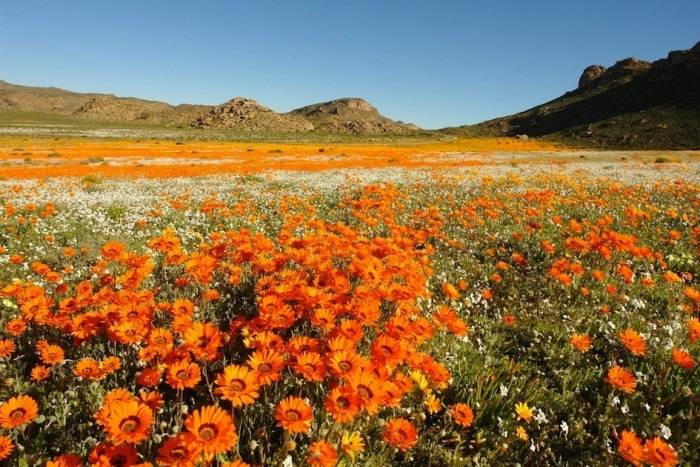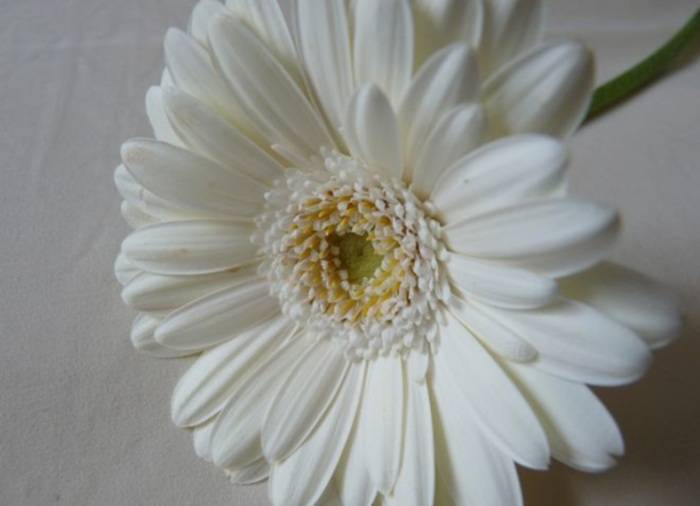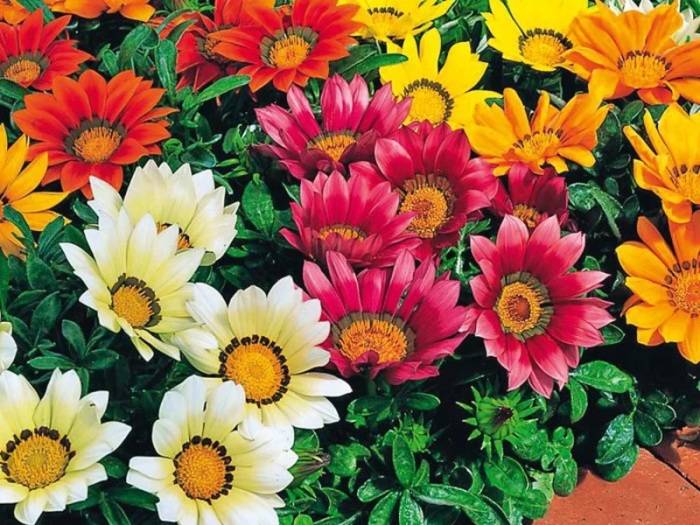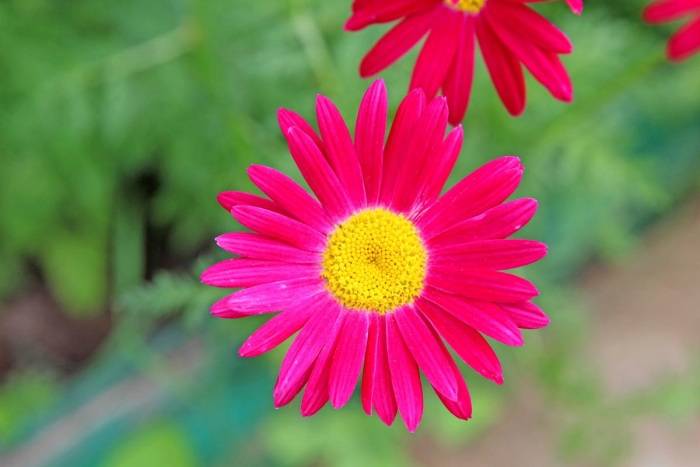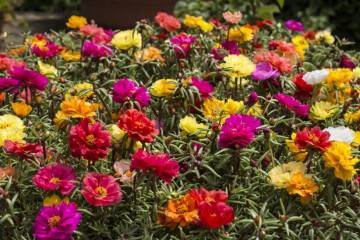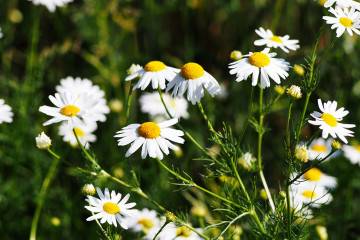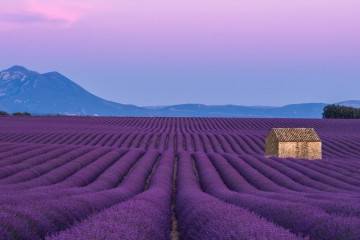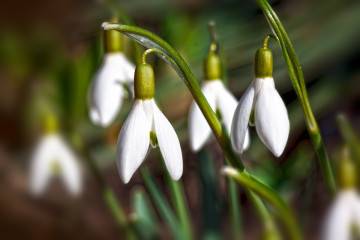What are gerbera flowers - how they look and how they grow
Content:
Bright gerberas are great for growing both in the garden and at home. Outwardly, they resemble a chamomile. Despite the fact that gerberas are thermophilic flowers, they can also be planted in Central Russia, but only in a greenhouse.
What does a gerbera look like
The botanical description is as follows. The Latin name for this plant is Gerbera. It belongs to the Asteraceae family.
You can see how gerberas grow in the wild in the southern part of the African continent, as well as on about. Madagascar.
First of all, the culture is grown because of the beautiful flowers that are cut.
What do gerbera flowers look like:
- peduncles are long, up to 60-70 cm, without leaves, some varieties have a slight edge;
- inflorescence type - basket;
- the diameter of the flower is from 4 to 30 cm;
- the leaf plate is oblong, pointed, pinnately dissected. The length of the leaves, collected in a basal rosette, reaches 35 cm. The petioles are pubescent;
- seeds remain viable for six months;
- flowering duration up to 4 months.
Common varieties and their features
In nature, botanists have counted about 80 species. The number of garden varieties and hybrids bred by breeders is generally innumerable.
Among the common varieties, the following are distinguished.
Gerbera Jameson (in another transcription - Jameson) is a natural species, on the basis of which many hybrid varieties of various shades have been bred. This beautiful plant is often grown as a potted indoor flower. This perennial has a powerful root system and a thick peduncle reaching 30 cm. The leaf plate has a light green color and a wavy edge.
A flower can rightfully be called a commercial flower, since the number of pieces sold daily in a cut form is innumerable. The color of the flowers is varied, there are also two-color varieties.
Authentic white Abyssinian gerbera with a yellow-green core. Sometimes the petals of flowers around the core have a reddish tint.
Wright's gerbera flower is whimsical and requires special care. It is light and thermophilic, it grows best in greenhouse conditions than at home. The flowers are large red, white, orange, pink.
Gerbera Viridifolia is a green-leaved gerbera that is another progenitor of many hybrids. In nature, it is painted in light shades.
Picture 6. Viridifolia
For home cultivation, the Festival variety is most suitable, showing a variety of colors. Large flowers can be of almost any shade, you will not find only blue. Stems and peduncles are short.
There are hybrids with needle petals, as well as double and semi-double varieties.
Gerbera mix is not a separate variety, it is just a mixture of varieties.
There is also a low-growing variety - mini gerbera. It is often used as a home potted plant.
Briefly about the history of appearance
Gardeners have known what gerberas are for a long time. Charming bright daisies appeared thanks to the associate of K. Linnaeus, the Dutch botanist J.F. Gronovius. He discovered them in South Africa during his expedition in 1717.
For 20 years, the plant remained unnamed, and then it was named as "gerbera". There are two versions of the origin of this appellation:
- from the Latin word "herba" is translated as "grass";
- the flower was named after T. Gerber, who was a close friend of Gronovius.
When and how different species bloom
Gerbera flowers come in a variety of colors, sizes and shapes. Only shades of blue are not found.
Types of flowers
It seems to the human eye that the gerbera has one flower per stem, but this is not so. What is perceived as a single flower is actually a basket inflorescence. It contains two types of flowers:
- tubular type, forming a core;
- reed type, located at the edges.
Gerberas are divided into types and colors:
- white;
- red;
- yellow;
- orange;
- pink;
- bicolor.
Flower shapes
The shape of the inflorescence is round, reminiscent of a chamomile. Also, simple, double and semi-double varieties are distinguished in shape. The configuration of the reed petals is narrow (needle-like), medium and wide.
Flowering period
If properly cared for, the indoor gerbera will delight the owner with flowering from February to May and from July to November. Between these periods, the plant is dormant. In this mode, the gerbera can live up to 4 years.
Gerbera-like flowers
There are many flowers similar to gerberas. These are gazania, echinacea, pyrethrum, calendula, arctotis, venidium, erigeron, coreopsis, ursinia, chrysanthemum, anaciclus.
Gazania is another South African chamomile. A less whimsical plant, it can grow on poor soils. Very similar to the Mpumalanga symbol in size and shape. There are differences in the color of the petals. There is a dark speck at the base of the gazania petals. In addition, some varieties of gazania have a longitudinal stripe on the petals.
Echinacea is native to North America, differs from gerbera in its convex core, petals slightly bent down and serrated at the tips, and also in a poorer color range.
In feverfew, petals are shaped like a gerbera, but the core resembles the central part of a chamomile. Unlike gerbera, it tolerates cool well and is easier to care for.
Calendula flowers are smaller than South African chamomile and are colored only yellow and orange. A completely different leaf shape, which makes it easy to distinguish plants even at the seedling stage.
Arctotis is almost identical to the gerbera, but has a dark blue or light blue core.
Signs and superstitions, interesting facts
The meaning of gerbera in the language of flowers is extremely positive. If it is received from the hands of a man, then this indicates his interest and desire to flirt.
There is a wonderful legend that an angel flying across the sky saw a beautiful girl walking in a meadow. The enchanted angel collected the stars and threw them on the ground, where they turned into yellow, orange and red flowers.
There is one more legend. In ancient times, the forest nymph Herba lived, who was so charming that she was surrounded by the constant attention of young men and even girls. The modest forest dweller was tired of this, and she asked the gods to rid her of annoying people. The gods heeded her prayers and turned the nymph into a bright but simple flower. So Gerba hid from the glances that annoyed her.
There are several interesting facts about these colors:
- among cut flowers, gerbera is a long-liver; it can stand in a vase for up to 3 weeks. But so that the stems do not rot, you need very little water;
- transvaal chamomile, as the British call it, is in the TOP-5 flowers sold around the world;
- Gerbera adorns the coat of arms of the province of Mpumalanga (formerly the Eastern Transvaal) in South Africa.
Gerbera is a wonderful indoor flower. No unpleasant superstitions are associated with it, it is not dangerous for pets and, with proper care, will delight owners with abundant flowering twice a year.
